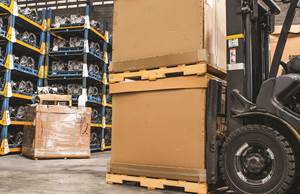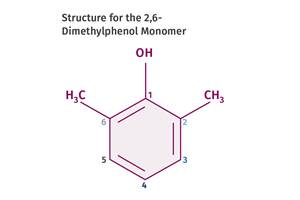New Starch-Based Bioplastics Arrive
Two new families of starch-based bioplastics are coming to the U.S. market.
Two new families of starch-based bioplastics are coming to the U.S. market. The one that’s available immedi-ately is an extension of the line of products supplied by Cereplast, Inc. This company has been offering 14 grades of compostable resins based on polylactic acid (PLA) or a thermoplastic starch mixed with some PLA. Now the firm is coming out with Cereplast Hybrid Resins, which are blends of plant starch with conventional polymers. These “hybrids” are not described as biodegradable, but rather as a way for manufacturers to reduce their reliance on oil and gas and increase their use of renewable resources. Because they are made with up to 50% conventional thermoplastics, Hybrids overcome what has been a limitation of most biobased resins to date—limited heat resistance in use and heat stability in processing.
PP/starch is very like PP
The first Cereplast Hybrid product on the market is Biopropylene CP Bio-PP-50. Chairman and CEO Frederic Scheer describes it as a patented mixture of polypropylene homopolymer with 50% starch and a blend of plasticizers or processing aids. Scheer says the product is made by reactive twin-screw compounding in which a chemical coupling occurs between the starch and PP matrix, which accounts for the material’s excellent properties.
Biopropylene has higher stiffness, strength, and heat resistance than un-filled PP but also has lower elongation and impact toughness. One notable advantage, says Scheer is Biopropylene’s easy printability, unlike standard PP. And unlike most biopolymers, it needs little or no drying.
The price of Biopropylene is similar to that of pure PP, though its 16% higher density will raise its cost in use somewhat. “We can offer long-term contracts at a guaranteed price,” notes Scheer. He will even consider toll compounding if the customer can get a better price for PP.
Targeting durables
Cereplast is aiming this product at durable goods rather than disposable packaging (though several food packagers reportedly are interested). Scheer says it has aroused considerable interest in the automotive field and is also targeted for housewares and other consumer products, toys, consumer electronics, cell-phone and computer housings, medical products, cosmetics packaging, CD/DVD cases, furniture, and building construction.
Biopropylene can be tailored for different uses. It can be formulated with any PP resin and various starches— corn, tapioca, wheat, and/or potato. Cereplast can vary the blend of starches for both properties and economics, Scheer said.
Biopropylene has been tested in sheet extrusion, thermoforming, blow molding, and injection molding, though not yet in blown film. It runs on conventional equipment in similar cycle times, but generally at lower temperatures. Processing requires low-shear screws and temperatures below 200 C (392 F). The resin is opaque and can be colored with standard PP masterbatches or colorants specifically designed for biopolymers by ?rms like PolyOne, Clariant, and Colormatrix.
| Cereplast Biopropylene Vs. PP Homopolymer | ||
| Property | CP-Bio-PP-50 | Homo PP |
| Density, g/cc | 1.04 | 0.9 |
| Ult. Tens. Str., psi | 2410 | 1650 |
| Ultimate Elong., % | 9.5 | 130.1 |
| Flex. Modulus, psi | 139,940 | 101,718 |
| Tensile Mod., psi | 299,280 | 119,480 |
| Notched Izod Impact, ft-lb.in. | 0.57 | 1.81 |
| HDT@264 psi, F | 142.3 | 129.9 |
| MFI@190 C/2.16 kg.g/10 min | 3 to 6 | 3 |
Though not intended to be compostable, Biopropylene is being tested for biodegradability and compostability. The starch component is expected to break down, leaving small fragments of PP. Scheer notes that the resin has already passed toxicity tests required for composting in the U.S. (ASTM D6400-04), Canada, and Western Europe. Cereplast is also seeking FDA approval for food contact.
Next year, Cereplast plans to launch Biopropylene grades with 60% and 70% starch, and after that will come Hybrids based on LDPE and HDPE.
Formable sheet & pellets
A second new family of starch-based materials—this one fully biodegradable and compostable—will be introduced in the ?rst half of next year by DuPont in collaboration with Plantic Technologies of Australia. Since 2003, Plantic has been making thermoformable sheets and injection moldable pellets of thermoplastic starch. Plantic uses high-amylose cornstarch that has been chemically modi?ed by hydroxy-propylation to make it behave as a thermoplastic. The starch is mixed with other polymeric and non-polymeric ingredi-ents, plasticizers and processing aids. One product is a wa-ter-soluble, sheet used for thermoformed candy trays. Other formulations have water resistance for up to 12 weeks.
DuPont will market the formable sheet and molding pel-lets here under its own Biomax trade name. Initially they will be imported, though DuPont could produce the products itself in the future. DuPont will also explore uses of its modi?er ad-ditives in the starch resins, similar to what it has done with Biomax Strong tougheners for PLA.
Carol Casarino, DuPont’s technology manager for sus-tainable materials, says the formable sheet will have “value in use” competitive with OPS, APET, and PVC. She notes that the starch-based resins have the advantage of being inherently antistatic. DuPont is developing processing guidelines. Plantic’s datasheets indicate that melt temperatures should be below 200 C and some predrying is generally necessary.
According to Plantic, material densities range from 1.35 to 1.62. The formable sheet is fairly rigid (319 to 348 kpsi tensile modulus), but the molding pellets come in both rigid and ? exible grades (68 to 661 kpsi modulus). Tensile strength ranges from 913 to 6670 psi, elongation at break from 2% to 135%, Izod impact from 0.56 to 1.46 ft-lb/in., HDT at 66 psi from 92 to 117 F, and Vicat softening point from 104 to 158 F. The sheet has 60º gloss of 80 to 85 and transparency of 89% to 93%.
Related Content
The Fantasy and Reality of Raw Material Shelf Life: Part 1
Is a two-year-old hygroscopic resin kept in its original packaging still useful? Let’s try to answer that question and clear up some misconceptions.
Read MoreTracing the History of Polymeric Materials: Polyphenylene Oxide
Behind the scenes of the discovery of PPO.
Read MorePBT and PET Polyester: The Difference Crystallinity Makes
To properly understand the differences in performance between PET and PBT we need to compare apples to apples—the semi-crystalline forms of each polymer.
Read MoreMelt Flow Rate Testing–Part 1
Though often criticized, MFR is a very good gauge of the relative average molecular weight of the polymer. Since molecular weight (MW) is the driving force behind performance in polymers, it turns out to be a very useful number.
Read MoreRead Next
Advanced Recycling: Beyond Pyrolysis
Consumer-product brand owners increasingly see advanced chemical recycling as a necessary complement to mechanical recycling if they are to meet ambitious goals for a circular economy in the next decade. Dozens of technology providers are developing new technologies to overcome the limitations of existing pyrolysis methods and to commercialize various alternative approaches to chemical recycling of plastics.
Read MoreProcessor Turns to AI to Help Keep Machines Humming
At captive processor McConkey, a new generation of artificial intelligence models, highlighted by ChatGPT, is helping it wade through the shortage of skilled labor and keep its production lines churning out good parts.
Read MoreUnderstanding Melting in Single-Screw Extruders
You can better visualize the melting process by “flipping” the observation point so that the barrel appears to be turning clockwise around a stationary screw.
Read More


























